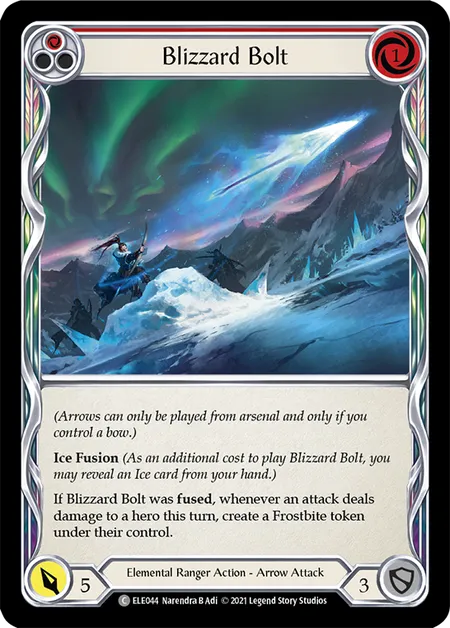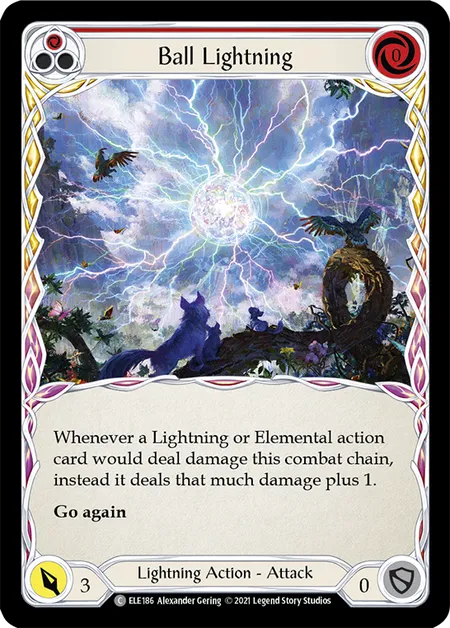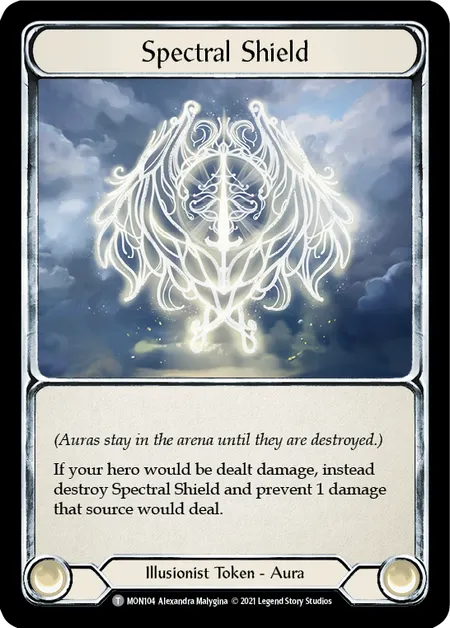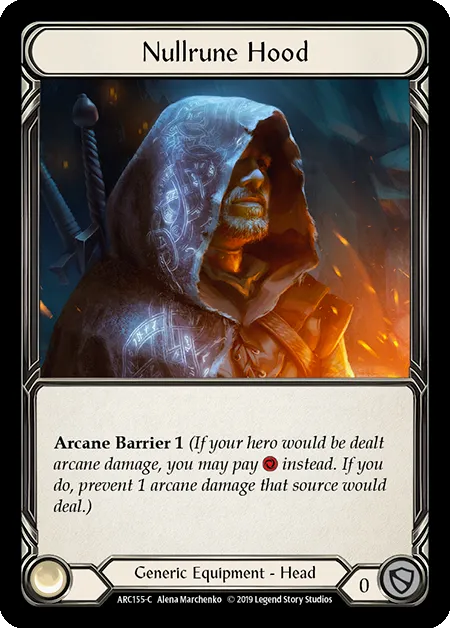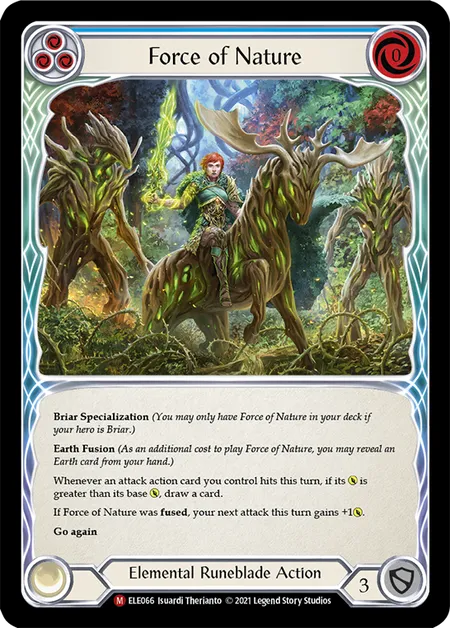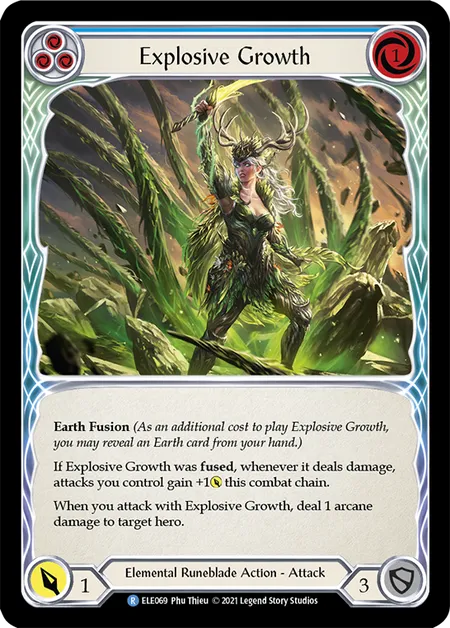With Skirmish season 3 running from November 13 through to December 5, we thought it would be the perfect time to address a few frequently discussed rules interactions from Tales of Aria (and beyond)! The differences between a "hit" and "dealt damage", understanding replacement and prevention effects and discussion of an "intervening if" are some of the most electrifying topics right now when it comes to commonly discussed rules queries and confusions. Today Legend Story Studios’ Rules and Policy Manager, Joshua Scott is here to provide definitive answers to some of these most frequently asked questions in the land of Aria!
Please note that some questions in this Rules Reprise article might be outdated.
Always check the Comprehensive Rules, and Tournament Rules and Policy, for the most up-to-date rulings.
What is the difference between an attack dealing damage and an attack hitting? (e.g. Buzz Bolt)
The most important point to remember when answering this question is that:
An attack only hits when it deals damage during the damage step of combat.
Any other damage that an attack deals otherwise is not considered a hit.
If it helps, you can think of it thematically like this. Buzz Bolt enchants your attacks with electricity. When you fire off an arrow, the arrow itself physically pierces and hurts the hero (dealing damage), and enchantment of the arrow will electrocute and also hurt the hero (dealing damage). Only the former, the physical arrow connecting with the hero, counts as the attack hitting; any other damage that the attack deals, including arcane and non-arcane damage (such as the electricity effect from Buzz Bolt), does not count as a hit for the purposes of triggered abilities, and other effects.
Some of these damage effects such as those on Buzz Bolt, Shock Charmers, Mark of Lightning, Shock Striker and arcane damage effects on Bramble Spark and Sting of Sorcery, deal damage with the source of the damage coming from the attack action card. This is relevant to consider for triggered abilities and replacement effects that reference an attack action card dealing damage.
In Tales of Aria there are a combination of damage-triggered abilities and hit-triggered abilities. It is important to be clear which is which, and how they should be applied. Here are some examples that discern between them:
Tyler controls Mark of Lightning. Tyler plays and resolves Flashfreeze, fusing a Lightning card. Tyler attacks Perry with Heaven's Claws. Perry defends with two 3 defense cards from hand. As Mark of Lightning triggered ability resolves, Tyler chooses to destroy it and have Heaven's Claws deal 1 damage to Perry (this does not trigger Flashfreeze). During the damage step of combat, the total defense is greater than the power of the Heaven's Claws, so no damage is dealt and the Heaven's Claws is not considered to have “hit”.
Tyler attacks Perry with Blizzard Bolt, fusing an Ice card, and Perry does not defend or prevent any damage. Blizzard Bolt deals damage during the damage step (Blizzard Bolt hits), and Blizzard Bolt’s ability triggers creating one Frostbite token under Perry’s control. Tyler then attacks Perry with Buzz Bolt, fusing a Lightning card, and Perry does not defend or prevent any damage. Buzz Bolt deals damage during the damage step (Buzz Bolt hits) and both Blizzard Bolt and Buzz Bolt’s abilities trigger. Tyler decides to resolve Blizzard Bolt’s ability first, which creates a second Frostbite token under Perry’s control. Then Buzz Bolt’s ability resolves and deals 1 damage to Perry (the source of the damage is Buzz Bolt), which in turn triggers Blizzard Bolt’s ability and creates a third Frostbite token under Perry’s control.
How do replacement and prevention effects work? (e.g. Ball Lightning)
To explain replacement (and prevention) effects, there are a few key points we need to remember.
- Replacement effects modify an event that is about to occur.
- Replacement effects can only modify an event once, and only if it meets the replacement condition.
- Prevention effects are replacement effects.
- The turn player chooses the order each player gets to apply their own replacement effects.
- Each player chooses the order of their own replacement effects.
With that in mind, we can explore the interactions between replacement effects using new cards in the set.
The most talked about card from Tales of Aria serves as a good example - Ball Lightning has a replacement effect with the condition that an (Elemental or Lightning) attack action card is dealing damage and an effect that increases the damage dealt by 1. For the replacement to be applied the condition must be met, so there must be some damage being dealt, and the source of the damage must be a Lightning or Elemental attack action card. If there is 0 damage being dealt, or the source is not a Lightning or Elemental attack action card, then the replacement effect does not apply.
Tyler attacks Perry with Ball Lightning (red). Perry defends with a 3 defense card. During the damage step of combat, the power of the attack is compared to the total defense and 0 damage is dealt. Therefore Ball Lightning’s replacement effect does not apply because it does not meet the condition. In contrast, if Perry defended with a 2 defense card, during the damage step of combat, 1 damage would be dealt; therefore Ball Lightning’s replacement effect does apply and the damage event is replaced to deal 2 damage instead.
Things can get rather complicated when there are both replacement effects that increase damage, and prevention effects that reduce damage. Typically, the turn player is the one dealing damage, so as a general rule of thumb you would apply the damage increase first to ensure the maximum damage is dealt.
Perry has a Spectral Shield Token. Tyler attacks Perry with Ball Lightning (red) and Perry defends with a 2 defense card. During the damage step of combat, 1 damage would be dealt. Tyler (as the turn player) decides that their replacement effects will apply first, followed by Perry’s. Ball Lightning applies first, increasing the damage to 2. Perry’s Spectral Shield's replacement effect then applies and reduces the damage to 1. Therefore 1 damage is dealt during the damage step of combat.
Perry controls two equipment with Arcane Barrier 1. Tyler plays Flicker Wisp, fusing a Lightning card. Flicker Wisp resolves and will deal 1 arcane damage, and Tyler (as the turn player) decides that their replacement effects will apply first, followed by Perry’s. Flicker Wisp’s replacement effect increases the damage to 2 arcane damage. Perry now has the choice of reducing the damage with their arcane barrier, and can prevent 0, 1, or 2 damage by paying for neither, one, or both of their Arcane Barrier 1 effects respectively.
However, there are some cases where the opposite may apply. That is, where the turn player decides that the reduction will apply before the increase. Here is a real-world example.
Tyler controls one equipment with Arcane Barrier 1, and Perry controls Spellbound Creepers. Tyler attacks Perry, and Perry defends with an attack action card. Perry activates and resolves Spellbound Creepers, then plays Flicker Wisp, fusing a Lightning card. Flicker Wisp resolves and will deal 1 arcane damage, and Tyler (as the turn player) decides that their replacement effects will apply first, followed by Perry’s. Tyler activates their Arcane Barrier 1 first, paying 1 resource and reducing the damage down to 0 arcane damage. Perry’s Flicker Wisp replacement effect no longer applies because there would be no arcane damage being dealt, therefore it does not modify the damage event. In conclusion, applying the prevention first has negated the Flicker Wisp’s condition from being met, so it no longer applies.
Finally, there is a distinction between some similar replacement effects in how they work. Specifically, Crucible of Aetherweave (among similar cards) do not replace a damage event, but replace the effect of a card when it is played. This is because the replacement effect specifically states “the next card you play with an effect that deals arcane damage”, referencing the card played as the event for replacement, as opposed to “the next time you deal arcane damage” would reference a damage event. This is critical to fully understanding replacement effects because it allows cards that would normally deal 0 damage to deal more. For example:
Tyler has dealt zero damage to Perry this turn. Tyler activates and resolves Crucible of Aetherweve, then plays Blazing Aether. The replacement effect of Crucible of Aetherweve replaces the “Deal X arcane damage [...]”, with “Deal X+1 arcane damage [...]” as the card is played. When Blazing Aether resolves, the value of X is determined to be 0, and therefore the effect would deal 0+1 arcane damage. From here, replacement effects that replace arcane damage events would apply (such as arcane barrier).
Does Flesh and Blood have an intervening “if” for triggered abilities? (e.g. Force of Nature, Explosive Growth)
In short, no. Flesh and Blood does not use the intervening “if” for triggered abilities. Rather than go into details about the intervening if, let us explore how triggered abilities are described in Flesh and Blood when there is a combination of “when/whenever/at” and “if”.
As a side note, we are constantly striving to better the game and the wording used to describe effects within it. As such, we are transitioning from the use of the word “if” to “when/whenever/at” to indicate triggered abilities for future printings of cards, in order to distinctly separate them from conditional effects that also use “if”. In addition, one-off effects on attacks have been errata’d to be “when you attack” triggered abilities as noted in the comprehensive rules.
In general, if a triggered ability (that starts with “when/whenever/at [trigger condition]”) is followed by the phrase “if [condition] [effect]”, the ability still triggers when the “trigger condition” is met. However, when the triggered layer is resolving, the “if condition” must be met for the effect to successfully resolve. A good example of this kind of syntax would be effects printed on Dread Triptych, Rosetta Thorn, and Force of Nature.
Tyler plays Sting of Sorcery then attacks Perry with Dread Triptych. Three abilities trigger based on the attack event of Dread Triptych and Tyler choose to resolve in the following order:
- When you attack with this, deal 1 arcane damage to target hero.
- When you attack with Dread Triptych, if you've dealt arcane damage this turn, create a Runechant token.
- When you attack with Dread Triptych, if you've played a 'non-attack' action card this turn, create a Runechant token.
Trigger 1 resolves first, and Perry does not prevent any damage. When trigger 2 resolves, the condition “if you've dealt arcane damage this turn” is now true because Perry took arcane damage from the Sting of Sorcery triggered ability; therefore Tyler will create a Runechant token. Trigger 3 also resolves generating a second Runechant token.
On the contrary, if the phrase “if [condition]” is before the triggered ability “when/whenever/at [trigger condition]”, then this is an example of a conditional effect that creates a triggered ability. In short the “if condition” must be met for the ability to trigger (i.e. for the triggered ability to be functional). A good example of this kind of syntax would be fusion effects such as Explosive Growth, Chilling Icevein, and Endless Winter.
Tyler plays and resolves Force of Nature, not fusing a card. Tyler then attacks Perry with Explosive Growth, fusing an Earth card. The arcane damage from Explosive Growth triggers and Perry prevents it. For the attack itself, Perry does not defend nor prevent any damage and the Explosive Growth hits. There are two abilities that trigger at this point; the ability created by Force of Nature (triggered because the hit-trigger condition is met), and the Explosive Growth (functional because Explosive Growth was fused and triggered because the hit-trigger condition is met). Tyler decides to order the triggered abilities, such that the Explosive Growth ability resolves first. This increases the power of Explosive Growth to be greater than its base power. Next the Force of Nature ability resolves. The conditional effect of “if its power is greater than its base power” is now true (thanks to resolving the Explosive Growth ability first), therefore Tyler would draw a card.
Hopefully these questions and answers equip you with all you need for your upcoming battles, whether they be Skirmish season 3, The Calling, or anything in between! We'll be back next week with more quick questions (and answers) from Josh.


